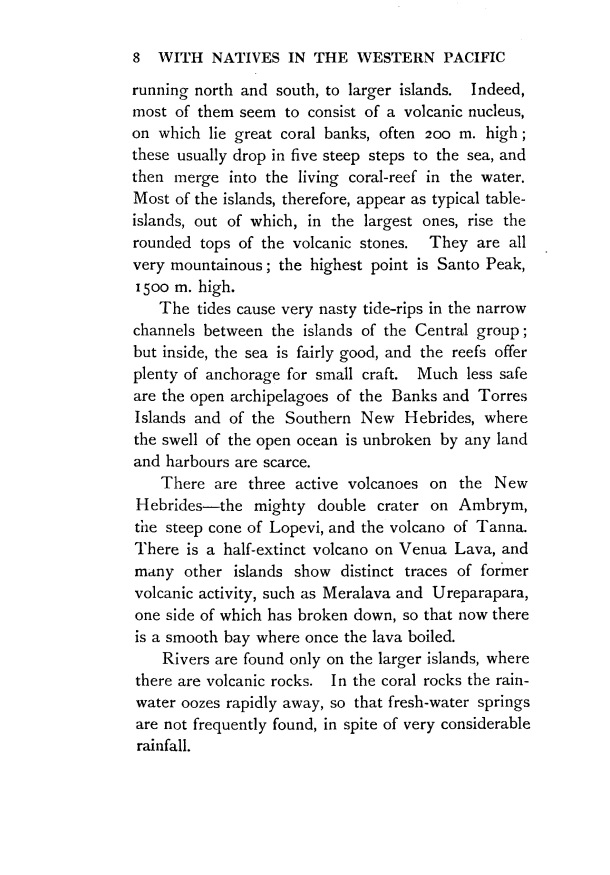|
|  [Note: this transcription was produced by an automatic OCR engine]
8 WITH NATIVES IN THE WESTERN PACIFIC
running north and south, to larger islands. Indeed,
most of them seem to consist of a volcanic nucleus,
on which lie great coral banks, often 200 m. high;
these usually drop in five steep steps to the sea, and
then merge into the living coral—reef in the water.
Most of the islands, therefore, appear as typical table-
islands, out of which, in the largest ones, rise the
rounded tops of the volcanic stones. They are all
very mountainous; the highest point is Santo Peak,
1500 m. high.
The tides cause very nasty tide-rips in the narrow
channels between the islands of the Central group;
but inside, the sea is fairly good, and the reefs offer
plenty of anchorage for small craft. Much less safe
are the open archipelagoes of the Banks and Torres
Islands and of the Southern New Hebrides, where
the swell of the open ocean is unbroken by any land
and harbours are scarce.
There are three active volcanoes on the New
Hebrides—the mighty double crater on Ambrym,
the steep cone of Lopevi, and the volcano of Tanna.
There is a half-extinct volcano on Venua Lava, and
many other islands show distinct traces of former
volcanic activity, such as Meralava and Ureparapara,
one side of which has broken down, so that now there
is a smooth bay where once the lava boiled.
Rivers are found only on the larger islands, where
there are volcanic rocks. In the coral rocks the rain-
water oozes rapidly away, so that fresh-water springs
are not frequently found, in spite of very considerable
rainfall.
|